One of the most basic pieces of advice I give out as an esthetician is that dealing with a blackhead when it’s just a blackhead is the best thing you can do for your pores. Open comedones, or blackheads, are clogged pores filled with sebum (oil), dirt/makeup, and dead skin cells that oxidize when exposed to air.
If left to sit around for too long, they move deeper into pores and can rupture, become infected with bacteria, and develop scarring inflammation. Some theories suggest that all acne originates as a micro-comedone.
So, by treating blackheads in their earliest stage, you may prevent more severe breakouts! Regularly cleaning out clogged pores is crucial for overall skin health.
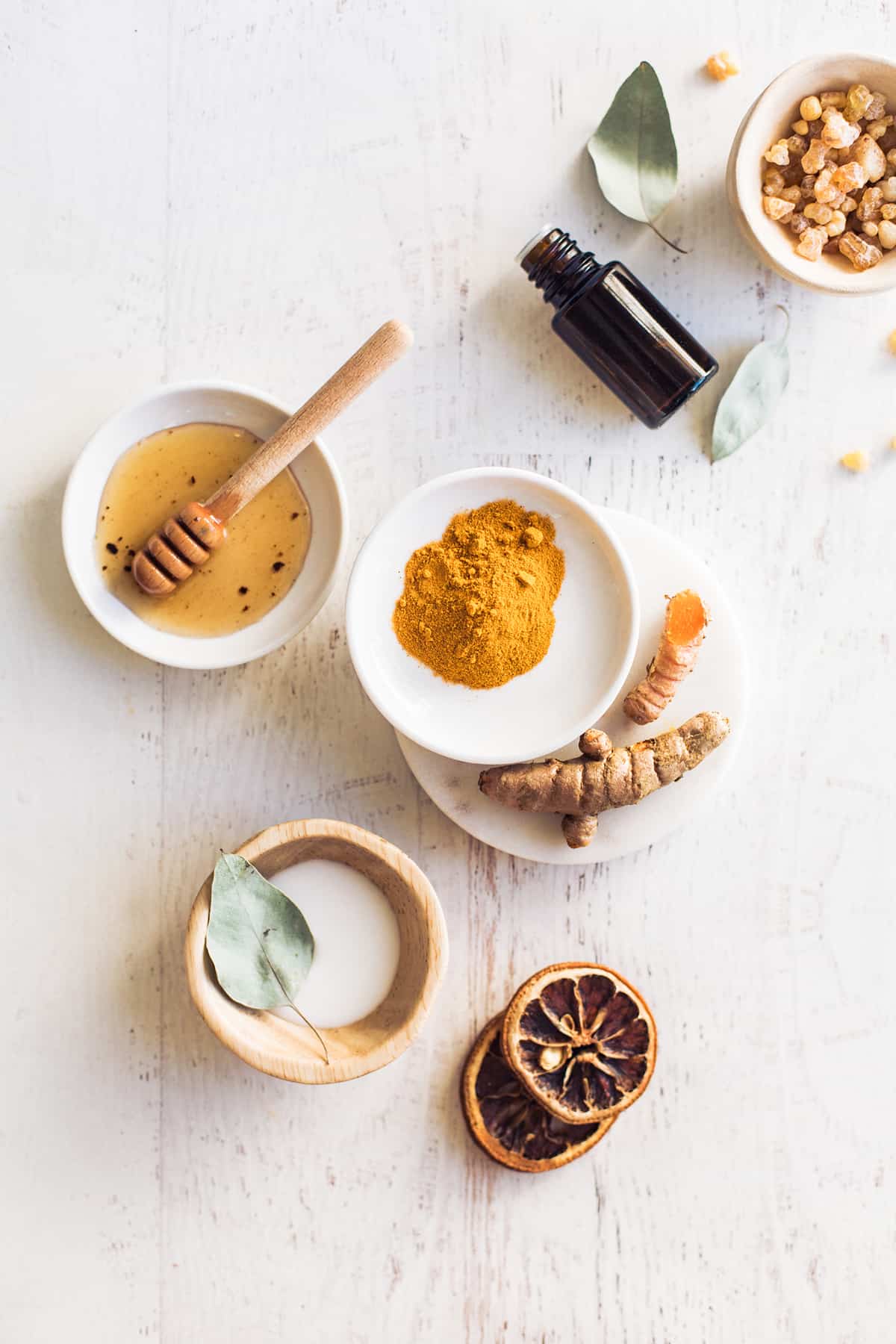
Blackheads also fill and expand pores, and the longer they remain in the pore, the larger the blackhead can become, and the larger your pore will stretch. Oily skin usually means larger pores, and the risk for blackheads is greater. If you have oily skin, you may wonder if that will ever change.
Often as we age, our oil glands slow down and we produce less oil, so it's not necessarily “once oily always oily,” I can assure you. These simple do-it-yourself blackhead-fighting masks are ideal for oily or acne-prone skin, no matter what stage in life you are in.
DIY Blackhead Masks: Natural Remedies for Clearer Skin
If you're struggling with clogged pores, blackheads, and oily skin, then DIY blackhead removal masks may be just what you need. These masks can be made at home using simple, natural ingredients and are a great way to unclog pores, remove dead skin cells, and reduce the appearance of blackheads. Here are some tips and tricks to help you make your own DIY blackhead masks.
Lemon Juice: Lemon juice is a natural astringent that can help to tighten pores and reduce the appearance of blackheads. Mix lemon juice with honey and apply it to your face using a facial brush. Leave it on for 10-15 minutes before rinsing it off with warm water.
Dead Skin Cells: Dead skin cells can contribute to clogged pores and blackheads. A simple solution is to exfoliate regularly to remove dead skin cells. Use a gentle exfoliator, such as sugar or baking soda, to scrub your face once a week.
Facial Brush: A facial brush is an essential tool for any DIY blackhead removal routine. It helps to gently exfoliate the skin, unclog pores, and remove blackheads. Use a soft-bristled brush and apply gentle pressure in a circular motion.
DIY Blackhead Removal Masks: There are many different types of DIY blackhead removal masks you can make at home. Some popular ingredients include activated charcoal, clay, and egg whites. Mix these ingredients with water or apple cider vinegar to create a paste and apply it to your face. Leave it on for 10-15 minutes before rinsing it off with warm water.
Oily Skin: If you have oily skin, you may be more prone to blackheads. To help combat this, use oil-free skincare products and avoid using heavy makeup. Additionally, use blotting papers to remove excess oil throughout the day.
DIY blackhead masks can be a natural and effective way to achieve clearer, smoother skin. By incorporating simple ingredients like lemon juice, facial brushes, and DIY blackhead removal masks into your skincare routine, you can say goodbye to clogged pores and hello to a more radiant complexion.
7 DIY Blackhead Masks
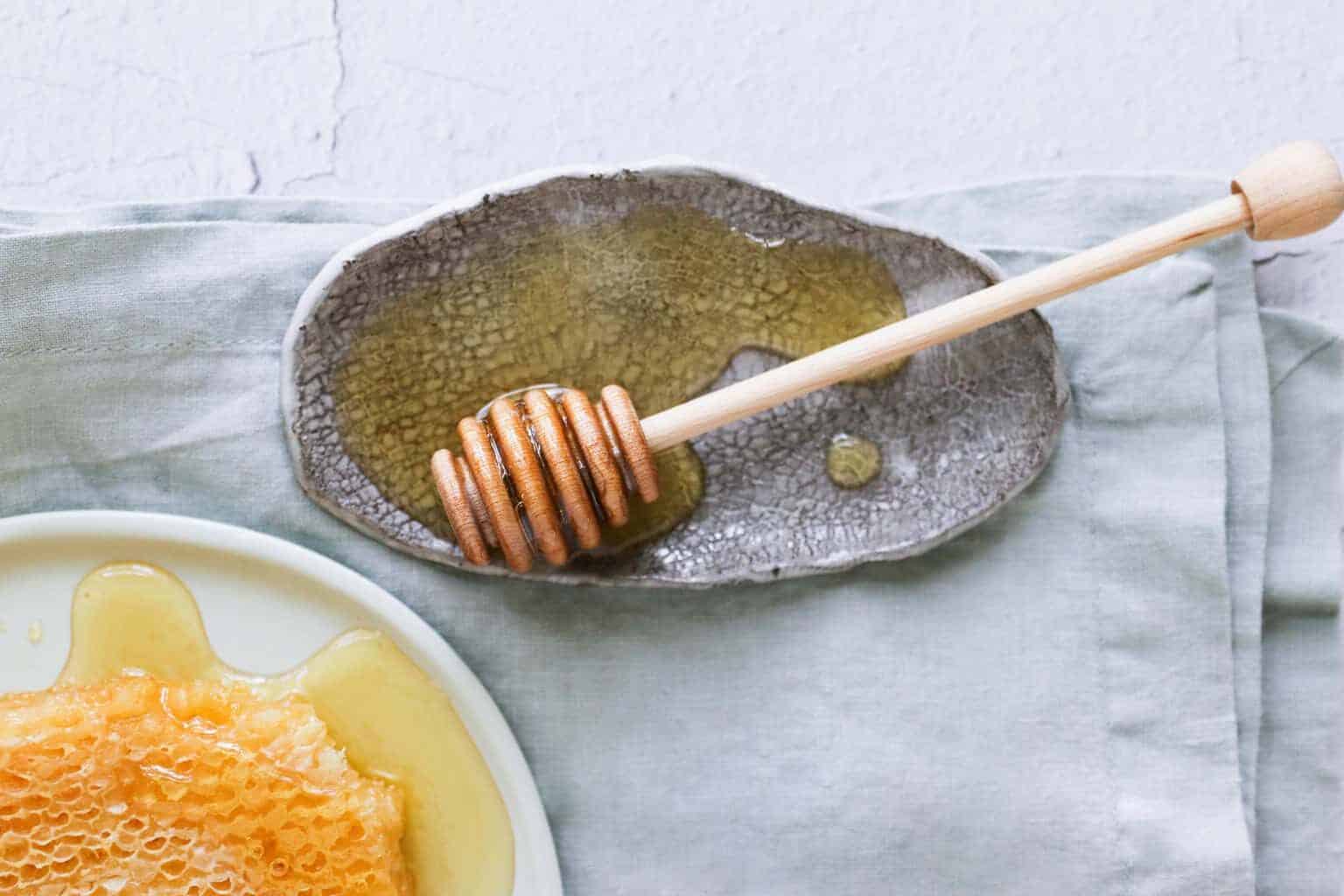
1. Honey Blackhead Mask
Honey is not only antibacterial but naturally unclogs pores as well. Using clean fingers, on a clean, dry face, apply small amounts of raw honey to your middle and ring fingers and gently pat on the skin where blackheads are present.
Repeat, concentrating on the chin, forehead, and nose areas, being careful to avoid the under-eye area as bruising can occur. Pat for 1–3 minutes total, not in the same area. Gently wash your face with warm water when finished.
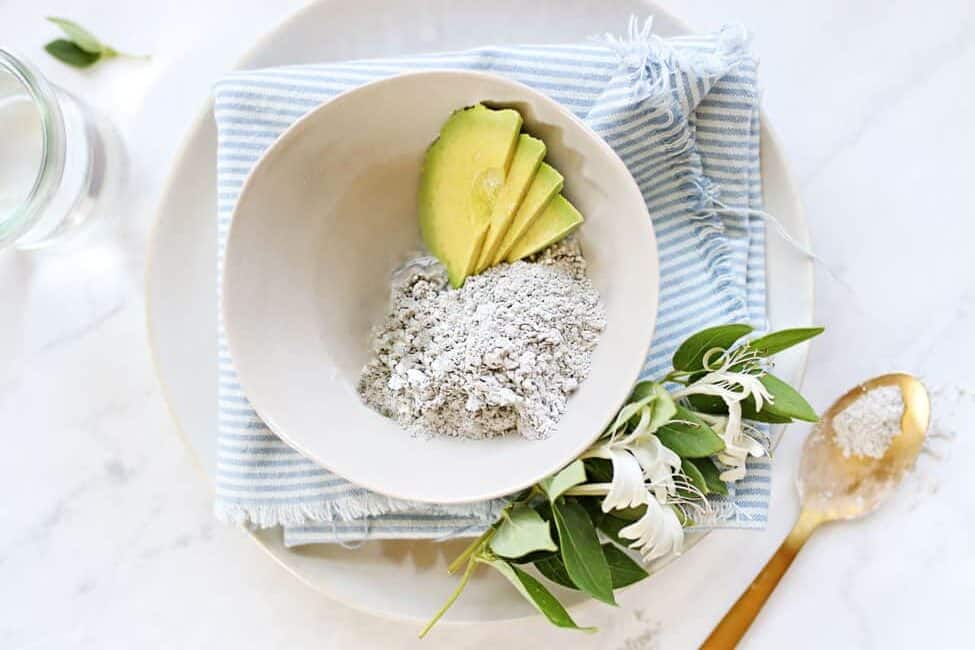
2. Clay Blackhead Mask
Clay is a wonderful ingredient to battle blackheads, drawing out impurities and unclogging pores. Moroccan red clay comes from the Atlas Mountains in Morocco and is ideal for oily and acne-prone skin.
- 2 tablespoons Moroccan red clay
- 3 tablespoons rose water
- 1 teaspoon mashed avocado
Combine these ingredients to create a paste. Using clean fingers or a brush, apply mask to the t-zone or acne-prone areas. As soon as the mask starts to lighten (a sign it is dry), rinse with warm water.
Avoid using a metal bowl or spoon for this recipe—instead, use glass or wooden instruments to maintain the potency and effectiveness of the clay’s properties.

3. Activated Charcoal Blackhead Mask
Drawing impurities and bacteria to the skin’s surface, activated charcoal scrubs are a fantastic oil blasting recipe for blackheads. Use once or twice a week to fight blackheads and dislodge the gunk from those pesky pores.
- 2 tablespoons unscented liquid Castile soap
- 1 tablespoon almond, jojoba, apricot kernel, or vitamin E oil
- 2 tablespoons finely ground brown or white rice flour
- 1 tablespoon baking soda
- 2 teaspoons activated charcoal powder
In a small bowl, stir together the Castile soap and oil. Add the rice flour, baking soda, and activated charcoal powder. The mixture may bubble up a bit. Keep stirring until smooth and creamy. Transfer to an airtight container and store in a cool, dry place.
To use, splash your face with a little water, so it is damp. Take 1–2 teaspoons of the scrub and gently apply to the face with your fingertips in small, circular motions, being careful to avoid the area around the eyes.
To use as a mask, let the scrub sit on the face for a few minutes for extra oil-absorbing benefits. Rinse with lukewarm water, and pat your face dry. If the scrub becomes too dry, add a little water or almond oil, and stir again until creamy.

4. Egg White Blackhead Mask
Regularly using a deep cleansing mask designed to control oil accumulation in your pores is crucial to keeping blackheads at bay. This mask should be applied at night once a week since the lemon juice can make skin photosensitive (caution with sun exposure, especially if you have a history of photosensitivity, as it may lead to skin hyperpigmentation).
- 1 egg white
- ½ teaspoon clay powder
- ¼ teaspoon lemon juice
Beat the egg white until fluffy and then add in the clay and lemon juice and mix well. It will form a paste that you will apply to your t-zone area or any other areas prone to blackheads.
If it's a bit thick, which will depend on the type of clay you use, add a ½ teaspoon of water. After 10 minutes, rinse with warm water. Follow with an appropriate nighttime facial oil or moisturizer.
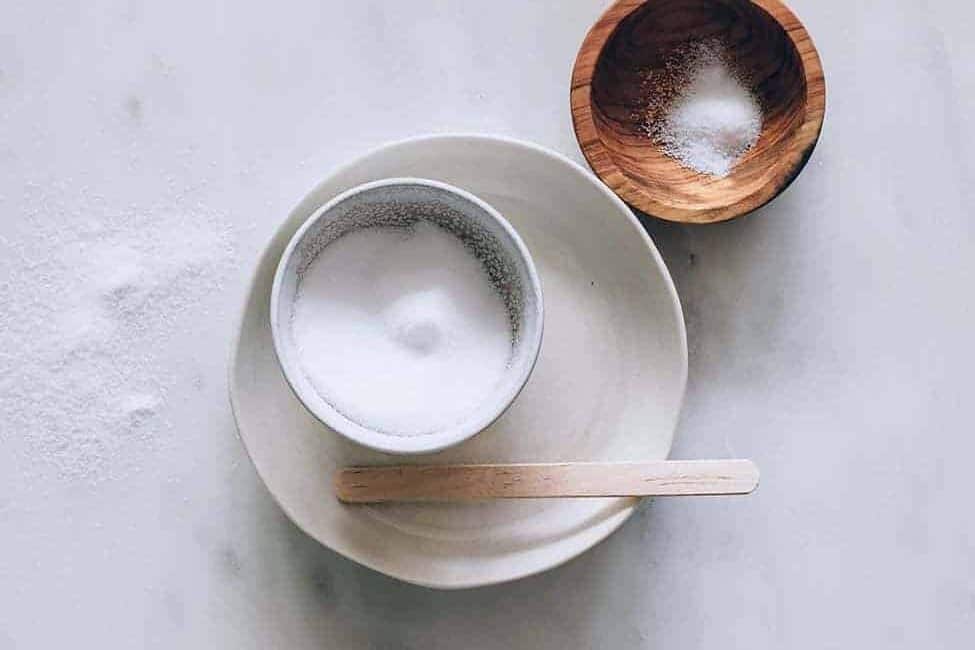
5. Baking Soda Blackhead Scrub
Combine the baking soda and raw milk in a bowl, and then gently scrub the areas with clogged pores and blackheads. Apply gentle pressure in a circular motion with your fingertips.
If you allow this scrub to partially dry, it becomes more of a gommage that you can gently remove in circular motions with your fingertips. Remove the excess with warm water.
- 2 tablespoons baking soda
- 2 tablespoons raw milk
- Add an activated charcoal capsule for extra cleansing power
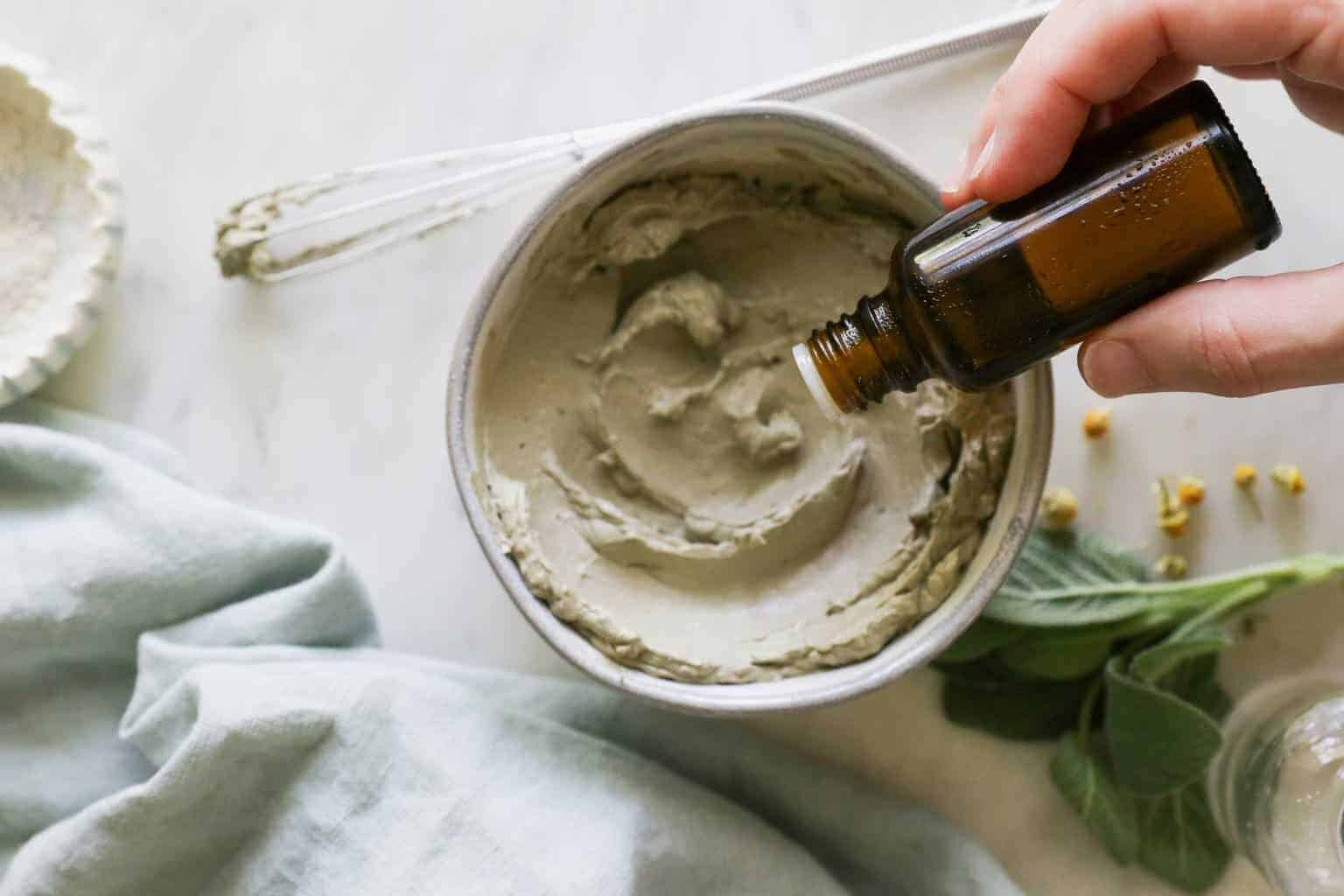
6. Bentonite Tea Tree Mask
Another clay that helps draw impurities out of pores is bentonite clay. Bentonite also soothes inflamed skin if you have any active breakouts. Combine bentonite clay with small amounts of water until a paste is formed, not too runny and not too thick it is difficult to spread.
Add one drop of tea tree oil and mix thoroughly. Leave on for 20 minutes and then remove with a warm washcloth.
- 3 tablespoons bentonite clay
- 1 drop tea tree essential oil
- water

7. Turmeric Honey Mask
Turmeric and it's anti-inflammatory benefits [source] combined with honey's bacteria-fighting properties [source] not only help remedy clogged skin but prevent blackheads from developing.
- 1 teaspoon turmeric powder
- 1 tablespoon raw honey
Stir honey and turmeric into a paste and then apply to areas of concern. Leave the mask on for 10 minutes or until you begin to feel tightness. Wash off with a warm washcloth.
Related
Need more ways to naturally care for your skin? These face mask recipes with ingredients from your kitchen will do the trick:
This post was medically reviewed by Dr. Jennifer Haley, a board-certified dermatologist with extensive experience in medical, cosmetic, and surgical dermatology. Learn more about Hello Glow’s medical reviewers here. As always, this is not personal medical advice, and we recommend that you talk with your doctor.
860
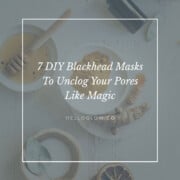
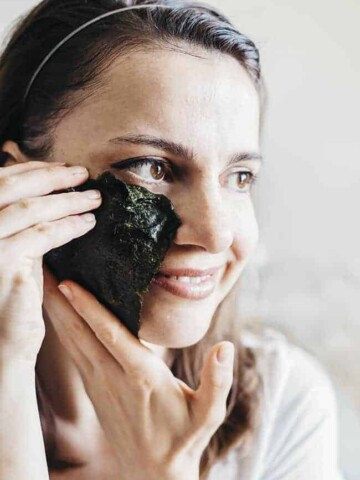
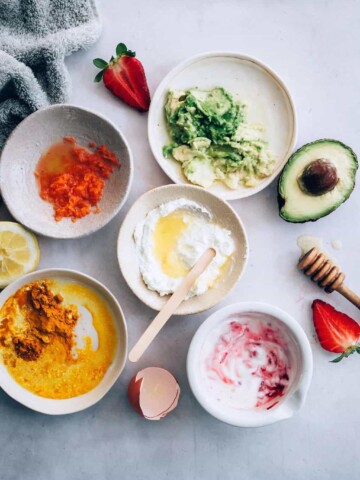
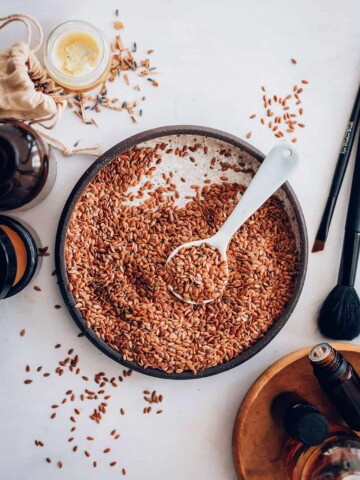

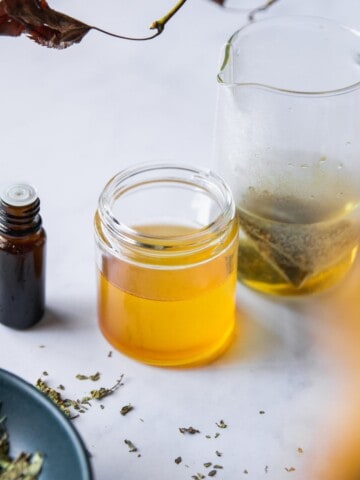
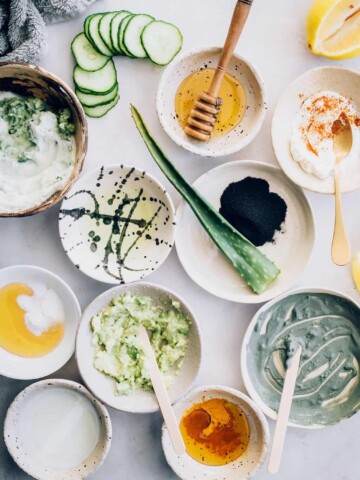

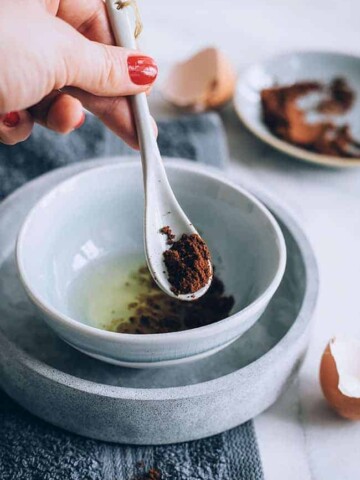
Leave a Comment